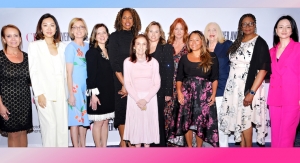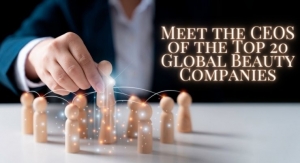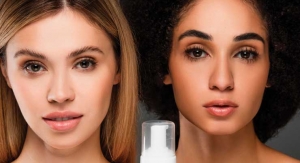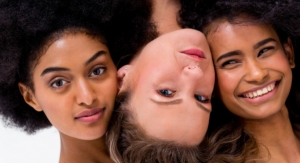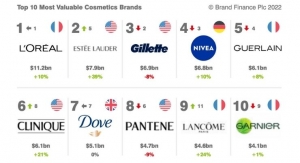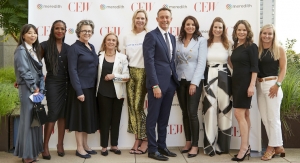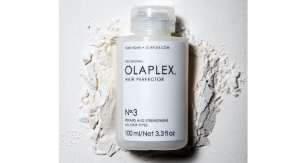Jamie Matusow, Editor-in-Chief, with Joanna Cosgrove, Contributing Editor11.02.18
Update: Shiseido ranks at #5 on our latest report Top 20 Global Beauty Companies 2021.
Below is a look at the company’s 2018 highlights, recent acquisitions, best-selling brands, and latest innovations.
Beauty Sales
$8.9 billion
(FY 2017: $7.3 billion)
Key Personnel
Masahiko Uotani, Shiseido group CEO
Jean-Philippe Charrier, president, Shiseido Asia Pacific
Franck Marilly, president and chief executive officer, Shiseido EMEA
Shigekazu Sugiyama, president and chief executive officer, Shiseido Japan
Masahiko Uotani, chief executive officer, Shiseido Group
Marc Rey, president and chief executive officer, Shiseido Americas
Kentaro Fujiwara, president and chief executive officer, Shiseido China
Philippe Leané, president and chief executive officer, Shiseido Travel Retail
Isabelle Gex, president of global fragrances
Major Products/Brands
- Shiseido, Clé de Peau Beauté, Bare Minerals,
- Buxom Cosmetics, NARS, IPSA, Laura Mercier,
- Benefique, Dolce & Gabanna, Issey Miyake,
- Narciso Rodriguez, Elixir, MAQuillAGE Haku,
- Prior, Anessa, Aqualabel, Za, Aupres,
- Urara, Pure&Mild, Senka, Tsubaki
- Sea Breeze, Shiseido Professional
- Joico, and MatchCo
New Products
- Perfect Cover Foundation MV Series
- Shiseido Essential Energy Skincare
- PICO cosmetics
- Optune IoT*1 skin care
- Giaran
- Amazon Alexa Skill
- Shiseido Makeup Collection
- NARS High Voltage Highlighting Palette
- NARS Powermatte Lip Luster
- BareMinerals Blemish Rescue Skin Clearing Loose Powder Foundation
Shiseido, By the Numbers
Shiseido enjoyed an 18.2% overall increase in net sales and a whopping 118.7% increase in operating income, thanks to factors including global growth in the company’s Prestige category, sales from brands added to the company fold in 2016 and doubled-down commitment to the company’s cost structure reform. Japan represented 42.9% of sales; followed by China (14.3%), Americas (14.0%), EMEA (12.8%), Asia Pacific (5.4%), travel retail (4.4%), professional (4.3%) and other (1.4%). Category-wise, prestige brands including Shiseido, Clé de Peau Beauté, bareMinerals and NARS, accounted for 42% of sales, while the company’s core cosmetics brands such as Elixir, Haku and Prior supplied 30%. Fragrances, like Dolce & Gabbana, Issey Miyake and Narciso Rodriguez represented 11% of sales; mid-priced personal care shampoos and body care brands were responsible for 9%; and professional products brought in 5% of sales.
In Q1 2018, sales continued to climb in nearly every region: Japan (+17%), China (+124.8%), Asia-Pacific (+16.1%), EMEA (+11.7%) and travel retail (44.3%). The regional exception was The Americas, which saw sales decline 1.1%. Sales in the company’s professional segment also took a hit, tumbling 55.4%. The company still has high hopes for a turnaround, expecting 2018 year-end sales to grow 2.8%, operating income to increase 11.9% and net income to jump 137.4%.
News of Note in 2017-2018
After selling its Zotos haircare brand to Henkel last October, Shisiedo moved full steam ahead to explore new ways to merge tech and beauty. In November, the company announced the acquisition of Giaran Inc., a Boston-based leader in artificial intelligence (AI) platforms designed to improve concepts of personalized beauty. Current technology within Giaran includes Makeup Virtual Try On, Tutorials, Color Matching, Personalized Recommendations, Makeup Removal, Face Tracking and Skin Tone Detection. The technology can be used across mobile, tablet and desktop as well as through a smart mirror powered by full HD augmented reality.
November also saw the launch of Shiseido Skill, a voice service that provides beauty advice in step with Amazon’s Alexa technology. The service enables consumers to engage with their device to request a “beauty weather forecast” and basic makeup advice for conditions spanning dryness, dark spots/freckles, pores, wrinkles, laugh lines, sagging, dullness, dark circles, redness and acne.
In December, the company released a new IoT*1 Skincare System called Optune that couples digital technology with the company’s own skincare science and beauty research for personalized beauty solutions. The company says the technology “uses a special machine backed up by unique algorithms to satisfy skincare needs in real time.” Test sales of the beta version began in spring 2018 in Japan.
In January, Shiseido acquired Second Skin technology from Olivo Laboratories, LLC. The patented technology is said to create a flexible artificial skin through the use of the layered application of an exclusive emulsion on top of a polymer-based cream, immediately tightening skin to smooth irregularities and conceal wrinkles.
Looking Ahead
Shiseido has implemented VISION 2020, a three-year plan to help invigorate sales. For Japan and China, this means growing the company’s core skincare and prestige brands, connecting with younger (and older) consumers and boosting e-commerce to ultimately grow sales by 4% annually. For The Americas, this will be accomplished through balancing costs, boosting digital sales and promoting growth in makeup brands to achieve a 2% increase in CAGR. In addition to VISION 2020, another leg of the company’s long-term growth plan is to become a top three company on the global prestige cosmetic market by 2030.
In the meantime, Shiseido is endeavoring to help “shape the future of sustainable packaging,” having joined the Sustainable Packaging Initiative for Cosmetics (SPICE), which was founded by L’Oréal and includes Avon Products, Chanel, Clarins and Coty among its membership. The core tenet of SPICE is transparency—facts and metrics—to keep tabs on cosmetics brands’ commitments and goals on reducing packaging’s impacts on the environment.
Read Next: Beiersdorf is #7








